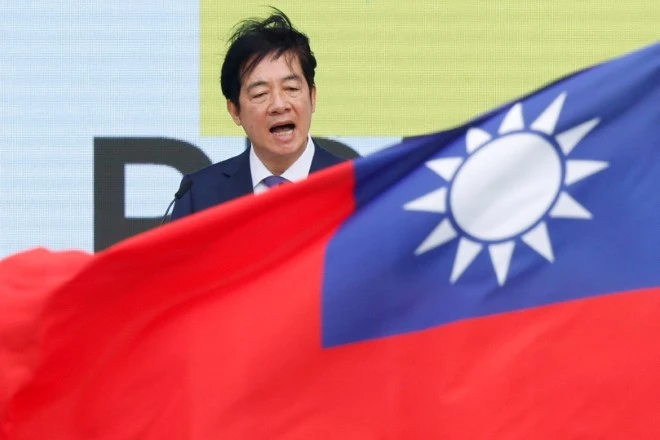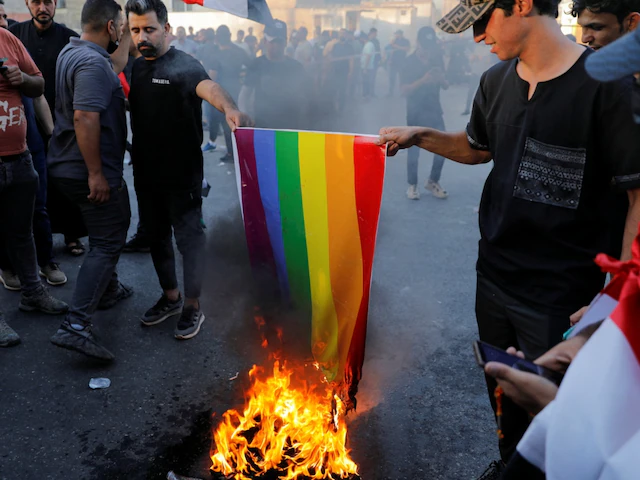Beijing's strategy to "reunify" Taiwan with mainland China involves a range of tactics including disinformation campaigns, cyber attacks, and covert operations. These measures, while short of full-scale war, approach its threshold.
As Taiwan prepares for its presidential election on January 13th, the political landscape is abuzz. The end of Tsai Ing-wen's historic eight-year presidency—the first female president of Taiwan—is nearing. Campaign posters and billboards featuring the smiling faces of the remaining candidates cover the cityscape. In the lead-up to the election, grand rallies featuring elaborate performances and high-tech laser shows are planned.
The festive campaign environment starkly contrasts with the high stakes of the election: for Taiwan’s major political parties—the incumbent Democratic Progressive Party (DPP) and the Kuomintang (KMT)—the choice represents a fundamental divide between autocracy and democracy, or potentially war and peace.
Taiwan remains a flashpoint in global politics. The People’s Republic of China (PRC) views Taiwan as an integral part of its sovereign territory, and sees reunification as a crucial step toward the "great rejuvenation of the Chinese nation." Although Beijing prefers a peaceful resolution, it is prepared to use force if Taiwan moves toward formal independence. This stance is codified in Chinese law, which permits the Communist Party (CCP) to respond with military action if necessary.
Tsai Ing-wen's administration has been a thorn in Beijing's side. Her pro-sovereignty stance and the DPP’s push for independence have intensified Beijing's rhetoric and actions. The People's Liberation Army (PLA) has undergone rapid modernization, including the development of sophisticated missile systems and cyber warfare capabilities. The expansion of China's already largest navy further underscores its growing military prowess. Former Chinese Premier Li Keqiang, shortly before his departure, unveiled a military budget of 1.55 trillion yuan (about $224.8 billion) for 2023, underscoring the PRC's increased focus on "preparations for war."
Analysts tirelessly monitor the evolving threats to Taiwan, understanding that a potential conflict over the island could have far-reaching consequences, including the risk of igniting World War III. Although the United States is not legally obligated to defend Taiwan in the event of a Chinese invasion, the 1979 Taiwan Relations Act implicitly conveys a commitment to support the island, even though this commitment is intentionally vague to preserve strategic flexibility.
This deliberate "strategic ambiguity" provides the US with room to maneuver and discourages both China from initiating an unprovoked attack and Taiwan from declaring independence unilaterally. Taiwan plays a crucial role in the security framework and trade routes of the Asia-Pacific region, and its loss would significantly undermine US influence in the western Pacific. For decades, the US has supplied arms to Taiwan, and President Joe Biden has repeatedly hinted at the possibility of US military support in the face of coercive threats from China.
From China's perspective, the risks associated with challenging a US-led coalition, coupled with the logistical difficulties of launching a seaborne invasion, serve as strong deterrents. The Taiwan Strait, which spans 110 miles, is notorious for its treacherous conditions, including 20-foot tidal surges. Any Chinese forces that managed to overcome these challenges would then face Taiwan's formidable defenses, including miles of boggy terrain, rugged mountains, and sophisticated asymmetric military strategies designed to counteract a force that vastly outnumbers them. A failed invasion would not only be disastrous on the battlefield but could also result in significant diplomatic repercussions for Beijing, including international isolation, harsh sanctions, and long-lasting diplomatic disputes.
Economically, an invasion would exacerbate China's struggling economy and threaten its position in the global market. The potential upheaval from such a forceful "unification" poses significant risks to both the stability of the Chinese Communist Party (CCP) and its broader strategic goals—at least for the time being. Analysts and prominent U.S. officials, including CIA Director William Burns, Secretary of State Antony Blinken, and former U.S. Indo-Pacific Command leader Philip Davidson, have forecasted that the People's Liberation Army (PLA) will be combat-ready by their centenary in 2027. Meanwhile, Beijing is covertly laying the groundwork for future conflicts.
Countries like Russia, Iran, and China do not view war and peace as a simple binary but rather operate in a nuanced "grey zone." This grey zone, characterized by activities like political warfare, sub-crisis maneuvering, and hybrid warfare, involves statecraft actions that fall short of full-scale armed conflict. These tactics blur the lines between diplomatic engagement and outright warfare, enabling revisionist states to subtly alter the status quo through a mix of political, informational, technological, and economic strategies. These approaches often stray from internationally accepted norms and are designed to incrementally advance these states' interests without sparking outright conflict or providing a clear cause for war. The emphasis is on ambiguity and gradualism, allowing for plausible deniability. For instance, before its annexations of Georgia in 2008 and Crimea in 2014, Russia engaged in activities that exemplify the grey-zone approach: in Georgia, it supported separatists and conducted military drills, while in Crimea, it utilized unmarked troops—known as "little green men"—to capture the Crimean parliament, achieving strategic objectives while denying direct involvement.
The PLA has similarly excelled in operating within the grey zone. Chinese military strategists learned critical lessons from the 1991 Persian Gulf War, recognizing the transformative role of precision weaponry, real-time intelligence, and electronic warfare in the U.S.-led coalition's success. This led to a new understanding of the battlefield as encompassing economic, financial, technological, and informational domains. Consequently, a new warfare paradigm emerged, with PLA colonels advocating for leveraging every available means to "compel the enemy to accept one's interests."
In 2003, China formalized its strategy by incorporating the "Three Warfares" (三战, sanzhan) into the PLA Political Work Regulations, marking a strategic shift. This approach includes three distinct yet interrelated components:
1. Public Opinion Warfare (舆论战, yúlùnzhàn): This strategy aims to shape global and domestic narratives to align with Beijing's interests. For example, during the COVID-19 pandemic, China utilized multilingual media outlets, social media platforms, and official statements to deflect blame for the outbreak and propagate narratives suggesting that the virus was engineered by the US as a bioweapon.
2. Psychological Warfare (心理战, xīnlìzhàn): This component seeks to undermine the morale of adversaries and exploit internal divisions. In Xinjiang, psychological tactics are manifested through arbitrary arrests, pervasive surveillance, forced labor, and mass internment of Uyghur Muslims. These actions are justified under the guise of combating extremism but function to instill fear and control within the minority community.
3. Legal Warfare (法律战, fǎlǜzhàn): This involves manipulating legal systems to advance China’s geopolitical goals. The 2020 National Security Law imposed on Hong Kong serves as an example. Its broad and ambiguous definitions of criminal acts, combined with its extraterritorial application, provide Beijing with a facade of legal legitimacy. This law enables China to suppress dissent and project its influence beyond its borders while claiming to uphold "national security."
These strategies work together as part of China's peacetime employment of force, subtly shifting the geopolitical balance in its favor and eroding the political, ideological, psychological, and legal domains of its adversaries. This continuous, low-intensity approach aims to achieve strategic victories without direct confrontation, adhering to the principle of winning without fighting (不战而胜, bùzhàn ér shèng).
Taiwan is strategically positioned at the forefront of Beijing's grey-zone warfare strategies, much like Georgia and Ukraine have been for Russia. This makes Taiwan a critical testing ground for China's covert and overt influence tactics, espionage, and interference campaigns. For instance, the tactics honed in Hong Kong and Taiwan are later applied to other democracies. In the UK, the Intelligence and Security Commission (ISC) has raised concerns about Beijing's pervasive infiltration into various sectors of British society. This includes its influence over the economy and academic institutions, its suppression of criticism against the Chinese Communist Party (CCP), and the appropriation of UK intellectual property to bolster China's military capabilities. According to the ISC, these tactics could potentially lead the UK into a "nightmare scenario" where it loses control over its own sovereign interests.
In Taiwan, Beijing's strategy involves creating a perception that unification is both inevitable and irresistible. This approach combines coercive measures to pressure decision-makers with incentive-driven tactics aimed at winning the support of the Taiwanese people. For example, in mid-October 2023, a large demonstration erupted in Taipei's central boulevard, where protestors waved flags with the "blue sky, white sun, and wholly red earth" of Taiwan. The rally was sparked by a disturbing video depicting a soldier brutally killing civilians and burying them in a mass grave. Although the video was presented as footage from the Israeli-Palestinian conflict, it was actually from Syria's civil war in 2013, according to Eve Chiu of the Taiwan FactCheck Foundation. The video, with its Chinese caption reading, "This is the Israeli-Palestinian conflict, not a movie! This is war. People have nowhere to escape, families are destroyed," was manipulated to support a pro-unification narrative. It portrayed a sense of urgency for peace, criticized the Democratic Progressive Party (DPP) as warmongers, and called for an end to their governance in the 2024 elections.
Taiwan's information landscape is inundated with disinformation, exacerbating the nation's deep-rooted ideological rifts over its relationship with China. This divide is evident in the political spectrum, which is sharply polarized between the "blue" pro-engagement parties, represented by the Kuomintang (KMT), and the "green" China-skeptics led by the Democratic Progressive Party (DPP). Both sides engage in mutual discrediting through propaganda, creating a fertile environment for disinformation, which is then magnified by Chinese Communist Party (CCP) operatives.
An analyst from Doublethink Lab, a Taiwanese NGO focused on PRC global influence and information operations, highlights that the PRC capitalizes on the vulnerabilities of Taiwan's open, free, and relatively unregulated media environment. This exacerbates existing debates and obscures the truth. In the past, misleading content from Chinese "content farms" was relatively easy to spot due to its awkward language and lack of originality. However, since 2018, the PRC's tactics have evolved significantly. Now, they use extensive data collection and sophisticated artificial intelligence technologies to produce more convincing content that seems to originate from within Taiwan. For example, targeted misinformation and false rumors are spread through automated bots and trolls across social media platforms like Facebook and the popular messaging app LINE. These falsehoods are then further propagated by unsuspecting Taiwanese users, creating a scenario where the aim is to "Lebanonize" Taiwanese society—intensifying existing divisions by sowing confusion and fear. This updated approach helps the PRC evade detection by Taiwan’s vigilant civil society.
Moreover, Beijing employs a strategy reminiscent of Mao-era policies that used civilians to further political agendas. It targets influential individuals—such as social media personalities and artists—who are then co-opted to spread discordant narratives within Taiwan's media. For instance, the DPP is depicted as inherently corrupt and blamed for Taiwan's economic woes, such as stagnant wages and increasing youth unemployment. Concurrently, narratives undermining the Taiwanese military's competence are circulated to erode trust in its defense capabilities. Another harmful narrative, known as the "American skepticism narrative" (疑美论, yimei-lun), portrays the US as a fickle ally likely to abandon Taiwan. This narrative is particularly damaging given Taiwan's geopolitical isolation and ambiguous international status, where recognition of the CCP as the sole legitimate Chinese government is a prerequisite for diplomatic relations with China. Consequently, Taiwan's diplomatic allies have dwindled to just 13, and its participation in international organizations like the UN and WHO is restricted, limiting its ability to advocate for its interests. Ultimately, the overarching "master narrative" promoted by Beijing is that Chinese and Taiwanese people are one family who should unite—encouraging support for the blue camp to avoid Taiwan becoming "the next Ukraine."
Beijing's efforts to influence Taiwan's media environment are accompanied by another facet of psychological warfare: persistent military intimidation. This includes frequent intrusions into Taiwan's Air Defence Identification Zone (ADIZ)—a crucial buffer zone between international and Taiwanese airspace—as well as naval exercises in the Taiwan Strait. For example, after former U.S. House Speaker Nancy Pelosi visited Taiwan in 2022, China launched a 10-day military exercise known as Operation Joint-Fire Strike, which involved firing 11 ballistic missiles in close proximity to the island. Similarly, following a trip by William Lai, Taiwan's Vice President and the Democratic Progressive Party's 2024 presidential candidate, to New York, China responded with intensified air and naval patrols around Taiwan. Beijing has labeled Lai as a "troublemaker" and separatist, further escalating tensions.
China's military maneuvers are a direct demonstration of its power and determination. However, Beijing also employs a subtler approach through the use of civilian vessels, which contributes to its psychological strategy. For instance, fishing fleets and research vessels are frequently deployed in contested areas of the South China Sea and around Taiwan. These vessels engage in maritime militia activities, including surveillance and data collection, effectively merging civilian and military operations. This "grey-zone" strategy of combining overt military actions with covert maritime presence helps China assert its territorial claims while complicating international responses.
Moreover, Taiwan faces an onslaught of cyber-attacks, with approximately 20 million attacks occurring daily, most of which originate from China. The establishment of the Strategic Support Force (SSF) within the People's Liberation Army (PLA)—which consolidates capabilities in space, cyber, and electronic warfare—emphasizes Beijing's focus on controlling information in conflict situations. Should an invasion occur, the SSF's primary objective would be to disrupt, paralyze, or destroy Taiwan's critical infrastructure, intelligence networks, and military command systems to achieve information superiority. During the 2019 Hong Kong protests, the PLA was unable to deploy tanks effectively due to the high levels of connectivity and visibility. In contrast, China plans to implement a communications blackout in Taiwan, aiming to isolate the country from external support and plunge it into darkness.
You might wonder how Beijing plans to win over the Taiwanese people when its methods involve threats, aggression, and interference in Taiwan's internal affairs. Is Beijing's approach a realization that peaceful unification with Taiwan is an unattainable goal, leading to a more Machiavellian strategy? Strangely enough, the answer is no.
According to Tsunghan Wu from Taiwan's Institute for National Defense and Security Research, China's tactics have evolved under Xi Jinping. The strategy now combines increased pressure with more attractive incentives—essentially, a mix of harsher penalties and more appealing rewards.
This approach is evident in China's economic strategies, such as the "31 Incentives" program introduced in 2018 and expanded with 26 additional measures in 2019. These incentives aim to attract young Taiwanese entrepreneurs and professionals, encouraging closer economic ties between Taiwan and China. For example, China has offered additional university seats at prestigious institutions like Peking and Tsinghua universities for Taiwanese students and provided significant awards and funding to Taiwanese researchers. However, Taiwanese youth must weigh these enticing offers against potential trade-offs in their personal freedoms and quality of life.
On the other hand, China's recent actions, such as the harsh crackdown in Hong Kong and the repression of ethnic minorities, have alienated younger Taiwanese. This has sparked a generational shift towards a stronger desire for Taiwan to maintain its distinct and autonomous identity. Increased support for progressive values and deeper connections with other democratic nations have further widened the ideological gap between Taiwan and China. Recent surveys reveal that fewer than 6 percent of Taiwanese support unification with China, while over 88 percent favor maintaining the current status of de facto independence.
The positions of the 2024 electoral candidates illustrate the current political landscape. William Lai of the Democratic Progressive Party (DPP), who is leading in the polls and often referred to as the "continuity candidate," has moderated his previously pro-independence stance. For example, Lai has pledged not to alter Taiwan's current status quo, emphasizing stability. In contrast, Hou You-yi from the Kuomintang (KMT) proposes a "three Ds" strategy for the Taiwan Strait—deterrence, dialogue, and de-escalation. As the former police commissioner of New Taipei City, Hou’s approach indicates a cautious optimism towards mainland China while maintaining the status quo.
Independent candidate Terry Gou, founder of Foxconn, initially promised economic and technological advancements for Taiwan, including an ambitious defense policy involving 80,000 robots. However, he has since withdrawn from the race. At one point, the Taiwan People's Party, led by former Taipei mayor Ko Wen-je, seemed poised to disrupt the traditional KMT-DPP duopoly. Ko's platform focuses on practical solutions to domestic issues and appeals to voters disillusioned by the entrenched blue-green divide. Ko's perspective that Taiwan’s 24 million residents prioritize economic concerns, such as higher wages and affordable housing, over the "China question" might still work in his favor, despite his limited support base.
Given the People's Republic of China's (PRC) hostile attitude towards the DPP and its candidate William Lai—illustrated by Zhu Fenglian, spokeswoman for the Taiwan Affairs Office, equating a vote for Lai with "bringing war to Taiwan"—there is concern that China might escalate its grey-zone tactics if Lai wins another term. This situation raises the question: Will Taiwanese voters be pressured into supporting the party most accommodating to Beijing? To explore this, I consulted Marco Ho from the Taiwanese Civilian Defence organization Kuma Academy.
China’s current approach to governance hinges on a broad nationalism that is continually expanding. For instance, Beijing’s recent assertive military maneuvers in the South China Sea and its aggressive stance towards Taiwan highlight how the regime’s legitimacy is deeply intertwined with nationalistic goals. The extent of China’s military actions or any escalation in conflict is closely tied to the challenges the ruling Communist Party faces in maintaining its authority. This challenge includes managing a slowing economy, rising debt, and a declining population. The rhetoric of Chinese leaders or election candidates, therefore, often serves merely as a facade rather than reflecting genuine reasons for their actions.
Instead, the real barometer of China’s future aggression will be how secure the Chinese Communist Party (CCP) feels as it navigates these internal issues. For example, the CCP’s response to economic setbacks or demographic changes might influence its decision-making more significantly than public statements or election rhetoric.
On the other hand, Taiwan’s elections, which are characterized by vigorous competition and debate, highlight the island's dedication to democratic values and self-determination. This stands in stark contrast to the grey-zone tactics employed by China, which include cyber-attacks and disinformation campaigns aimed at destabilizing Taiwan. As Chiu aptly puts it, “When faced with a bully who continually pushes you, begging for mercy won’t help. Instead, you must remain calm and strong, making yourself resilient so that the bully can no longer affect you.”
Similarly, autocratic regimes like Russia and China are working to undermine the international order through such grey-zone tactics. To effectively counter these threats, it is crucial to strengthen democratic values and institutions not just in Taiwan but globally. Taiwan’s struggle to protect its democratic system is part of a larger battle against authoritarianism. For this battle to be won, it is essential for allied governments to adopt and share best practices learned from Taiwan to combat grey-zone strategies. Only through clear and collective international support can Taiwan’s future and its democratic principles be safeguarded.
The writer has used a pseudonym to protect their identity.













0 Comments